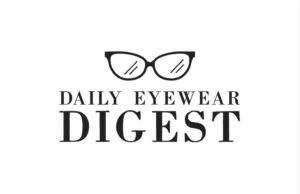The future of smart eyewear is quickly evolving, driven by innovations in artificial intelligence (AI). From simple corrective lenses to sophisticated augmented reality (AR) devices, the journey of eyewear has taken on a whole new dimension. Smart eyewear, equipped with AI, now offers features that extend beyond vision correction, allowing users to experience real-time information, interactive AR environments, and personalized eye care solutions.
In this article, we explore how AI is enhancing smart eyewear, delving into its components, uses, benefits, and challenges. We’ll also explore its applications across various industries and how it is set to transform our relationship with vision.
The Core Components of Smart Eyewear
Smart eyewear is more than just a stylish accessory—it’s a blend of advanced technologies, sensors, and AI algorithms. Some of the key components include:
- Augmented Reality (AR): AR layers digital content onto the real world, providing users with enhanced views and information overlays. In smart glasses, AR can display anything from navigation directions to real-time translations.
- Optical Sensors and Cameras: These components capture visual information and enable the device to process it, offering users augmented feedback such as object recognition or facial recognition.
- Microprocessors and AI Algorithms: The brains behind smart eyewear, these technologies work together to process data, deliver real-time insights, and adapt to the user’s needs, such as adjusting to different lighting conditions or providing visual assistance.
How AI Enhances Vision with Smart Eyewear
AI plays a crucial role in enhancing vision by making smart eyewear more adaptable and responsive. Key AI-driven enhancements include:
- AI-assisted vision correction: Unlike traditional glasses, AI-enhanced smart eyewear can adjust to different environments, optimizing the user’s vision in real time. For example, they can adapt to varying lighting or even provide personalized lenses that correct specific visual impairments.
- Machine learning models for environmental awareness: AI can detect changes in the user’s environment, like lighting, colors, or movements, and adjust the display to provide clearer vision.
- Visual augmentation for low vision and blindness: AI-powered smart eyewear can assist individuals with visual impairments by providing real-time object recognition, obstacle detection, and even facial recognition, allowing them to navigate the world more easily.
Augmented Reality in Smart Glasses
One of the most revolutionary aspects of smart eyewear is the integration of AR, which allows users to interact with their surroundings in new and exciting ways. Key applications include:
- Real-time information overlay: Whether you need directions while walking in a new city or immediate translations of foreign text, AR can display relevant information directly in your field of vision.
- Applications in professions: Surgeons, engineers, and architects are already benefiting from AR-enhanced eyewear, which helps them access critical information during complex tasks.
- Everyday tasks: From fitness tracking to shopping, AR-enabled smart eyewear can streamline daily tasks by displaying relevant information, such as heart rates during a run or product comparisons while shopping.
Smart Eyewear and Eye Health Monitoring
Smart eyewear isn’t just about vision enhancement—it can also improve eye health by:
- Detecting eye diseases: AI-powered eyewear can monitor early signs of conditions like glaucoma, macular degeneration, or diabetic retinopathy, helping users take preventative action.
- Tracking eye fatigue: AI can monitor how long you’ve been staring at a screen and recommend breaks to prevent eye strain.
- Blue light filtering: With built-in AI algorithms, smart eyewear can automatically filter harmful blue light based on screen usage patterns, reducing strain and the risk of long-term damage.
AI-Powered Wearable Displays and Visual Enhancements
Wearable heads-up displays (HUDs) are already making waves in industries such as aviation and sports. These HUDs project critical information directly onto a transparent display, allowing users to stay informed without losing focus on their primary task.
- AI-guided virtual assistance: For students, professionals, or anyone needing real-time help, AI in smart eyewear can provide virtual tutors or assistants that guide users through tasks hands-free.
- Gesture control and eye-tracking technology: Advanced AI can interpret eye movements and gestures, enabling a hands-free interaction experience.
Connectivity and Integration with Smart Eyewear
The future of smart eyewear will depend heavily on seamless connectivity. The combination of AI, 5G, and IoT (Internet of Things) creates an ecosystem where your glasses can sync effortlessly with your smartphone, laptop, or even smart home devices. This enables real-time data exchange, from notifications to updates, without taking your phone out of your pocket.
- Cross-platform integration: Apple, Google, and Microsoft are developing smart eyewear that integrates with their ecosystems, allowing users to sync data across multiple devices.
Privacy and Ethical Considerations in AI-Enhanced Smart Eyewear
As with any AI-driven technology, privacy concerns arise when it comes to data collection and usage. Smart eyewear often requires access to personal data like location, visual inputs, and even biometric data. Ensuring that this data is securely processed and stored is paramount.
- Real-time data processing: Many smart eyewear solutions focus on processing data locally, minimizing the risk of data breaches by avoiding cloud-based storage for sensitive information.
- Ethical concerns: The ability to record others or overlay digital information raises ethical questions, especially when it comes to surveillance and manipulation.
Smart Eyewear for People with Visual Impairments
One of the most promising applications of AI-powered smart eyewear is for individuals with visual impairments:
- Object recognition: AI can help users identify objects in their environment, from obstacles in their path to text on a sign.
- Voice-guided assistance: Smart eyewear can offer real-time audio cues, guiding users through their environment and providing spatial awareness.
- Success stories: Numerous cases have demonstrated how AI-enhanced eyewear has significantly improved the quality of life for visually impaired individuals, providing newfound independence.
The Role of AI in Fashion and Aesthetic Customization
AI is also playing a role in making smart eyewear stylish and personalized:
- AI-driven designs: Users can now choose from eyewear styles tailored to their preferences, with AI analyzing trends and providing recommendations.
- Customization for comfort and fit: AI helps ensure that smart eyewear is not only aesthetically pleasing but also ergonomically designed to provide long-term comfort.
Challenges Facing AI-Powered Smart Eyewear
Despite its promise, smart eyewear faces several challenges:
- Technological limitations: Current devices often struggle with battery life, processing power, and maintaining a balance between form and function.
- Adoption challenges: Consumers may be hesitant to adopt new technologies, particularly when privacy concerns or steep learning curves are involved.
Applications of AI Smart Eyewear in Various Industries
From healthcare to entertainment, AI-powered smart eyewear is set to revolutionize many industries:
- Healthcare: Surgeons use AI-enhanced smart eyewear to access real-time data during operations, improving precision.
- Education: AI-powered AR can create immersive learning environments for students, providing interactive and personalized education.
The Future of AI and Smart Eyewear
The future of smart eyewear looks bright, with AI continuing to push the boundaries of what these devices can do. Emerging technologies like gesture recognition and brain-computer interfaces are set to further enhance how we interact with the world through smart eyewear.
Leading Companies in the Smart Eyewear Industry
Several tech giants are leading the charge in the smart eyewear revolution:
- Google Glass: One of the earliest entries into the market, Google Glass has evolved into a tool for enterprise use, especially in manufacturing and healthcare.
- Microsoft HoloLens: Microsoft’s HoloLens has found its niche in the enterprise market, offering advanced AR capabilities for professionals.
How AI-Powered Smart Glasses Are Changing Work and Productivity
AI-powered smart eyewear enhances work productivity by offering features like virtual desktops, remote collaboration tools, and hands-free task execution.
Smart Eyewear and User Accessibility
AI-powered eyewear is also making strides in accessibility, offering tailored solutions for people with disabilities.
FAQs
- What is AI-enhanced smart eyewear? AI-enhanced smart eyewear is a type of wearable technology that integrates artificial intelligence to offer enhanced vision, real-time information, and augmented reality experiences.
- How does AI improve vision with smart eyewear? AI improves vision by personalizing the user experience, providing real-time adjustments to vision correction, and offering visual assistance for low-vision users.
- Are there privacy concerns with AI-powered smart glasses? Yes, privacy concerns arise due to the collection of visual, location, and biometric data. Ensuring secure data processing is critical to addressing these issues.
- How can smart eyewear help people with visual impairments? Smart eyewear assists visually impaired individuals by providing real-time object recognition, audio cues, and navigation assistance, improving their independence.
- What industries are most impacted by AI-powered smart eyewear? Industries such as healthcare, education, gaming, and entertainment are among those most significantly impacted by AI-powered smart eyewear.
- What challenges are associated with AI-powered smart eyewear? Challenges include technological limitations, privacy concerns, and consumer hesitance to adopt new technologies.
Conclusion
AI is revolutionizing the future of smart eyewear, offering enhanced vision, real-time information, and new ways to interact with the world. As technology continues to advance, AI-powered smart glasses will play an even more integral role in our daily lives, improving accessibility, productivity, and quality of life.

